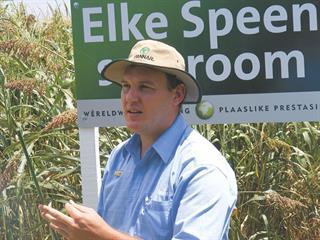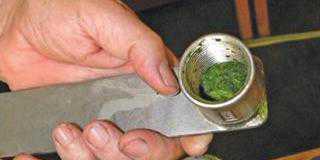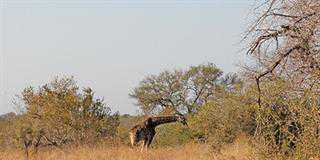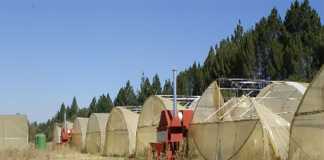
Diary cattle require top quality feed, explains Jan Coetzer, Pannar’s product manager for forage crops. He says every unit of nutrition intake above the cow’s basic maintenance requirement is essential for increased milk production, and therefore profitability.
“One should aim for a system that provides lots of the best quality fodder such as ryegrass,” Jan explains. “But ryegrass on its own won’t meet a herd’s nutritional demands permanently, even perennial ryegrass. It’s growth slows down in winter and additional fodder will be needed to maintain full production.”
“Silage and grains such as stooling rye or oats are a good choice to carry the animals over the winter. However, ryegrass struggles in the intense South African heat and annual ryegrass dies out in summer. It’s therefore advisable to grow additional, quality forage crops such as forage sorghum or clovers in summer. These can be used to compliment the ryegrass and maintain maximum milk yields.”
Ryegrass and forage sorghum
There are two types of annual ryegrass – Italian and Westerwold. Westerwold varieties are sown during early autumn (February/March), flower in early summer and are true annuals. Italian varieties are sown in spring after the major frosts (August/September) or early autumn (February/March). Westerwold types yield better in mid-winter, while Italian types perform better in late spring.
With autumn plantings, it’s important to establish the pasture as early as possible. Light irrigation every two to three days is important for young seedlings and must be continued until the roots are well developed.
Forage sorghum can be sown in areas with a rainfall of over 400mm/annum. It has a relatively large seed that’s fairly easily established in soil temperatures of 18°C and higher. Forage sorghum is an annual and can grow to a height of 3m. The stems are quite thick and the plants are very leafy.
The grain sorghum x sudan grass hybrids are predominantly used as a forage crop for intensive feed production, where they’re grazed or cut several times during the summer season. These are dual-purpose types and may also be used as a silage crop. After the first single grazing, leave the crop to grow and mature to be cut as silage.
Japanese radish
For dairy production in the more arid regions, Jan recommends dryland pastures such as oats or Japanese radishes. “These pastures can be supplemented by good quality Eragrostis or teff hay in winter,” he explains.
“Japanese radish is well-suited to the cooler eastern areas, with reliable rainfall from January to April, and can be used in autumn and winter. It’s cold-resistant and not affected by frost. Soils with good water retention is ideal.
“For cattle, Japanese radish is best pulled or ploughed out and fed whole. Don’t chop it into pieces, as the cattle may choke on it. It’s a good roughage supplement for dairy cows and a first-rate complementary crop with ryegrass, to ensure efficient fodder flow during the winter months.”
Stooling rye
During winter, stooling rye can be used on a rotation basis for top-producing animals such as ewes with lambs. It should be sown from February to April to have grazing available from May to August.
Stooling rye should be fertilised the same way as dryland wheat in summer rainfall areas, with nitrogen not exceeding 30kg/ha. If the plants show signs of nitrogen deficiency, a topdressing of 40kg/ha to 50kg/ha of nitrogen may be necessary after spring rains.
Tall fescue
“Intensive beef production under irrigation is on the rise, as farmers become more familiar with planted pasture management,” says Jan. “Tall fescue, a bunch-type perennial temperate grass, forms an ideal base crop as it can stand a lot more grazing than perennial ryegrass. It will grow well in most soil types and climates.”
“Although ryegrass provides better quality pasture, tall fescue is highly recommended for beef and sheep production. It’s particularly valuable when mixed and planted with species such as cocksfoot and clover. Tall fescue is best suited for hard rotational grazing but tolerates lax grazing relatively well. It also makes excellent silage, which could be used to bridge the winter pasture slump.”
Cocksfoot and clovers
Jan says cocksfoot is well-adapted to cool areas with an annual rainfall of 900mm and over. “It does exceptionally well on cool south-facing slopes and tolerates soil acidity relatively well. It’s a hardy, persistent and palatable perennial with a dry matter content of up to 32%. It offers good year-round grazing, but recovers slowly in winter.
Clovers produce high-quality protein and make an ideal pasture when grown together with the temperate grasses such as ryegrass, tall fescue or cocksfoot. This mixted growing also reduces the danger of bloat.”
Feed budget
Different livestock types require different dry matter (DM) intakes. These are usually expressed as a percentage of the animal’s liveweight.
Jan advises farmers to consult their local pasture agronomist or seed supplier for the best planted pasture options for their own circumstances and herds.
Contact Jan Coetzer on 033 413 9597.













